
You are in :
Wetlands
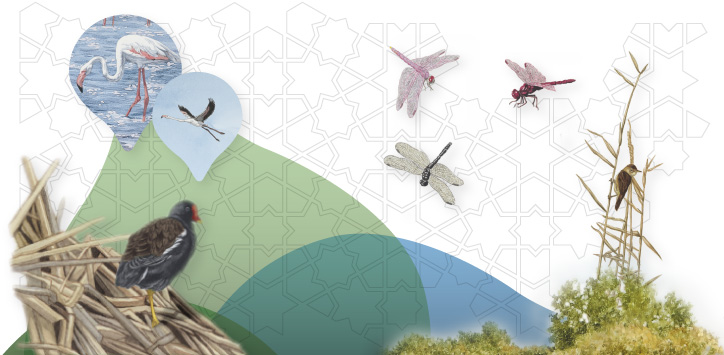
Al Wathba – The Pinkish Lake
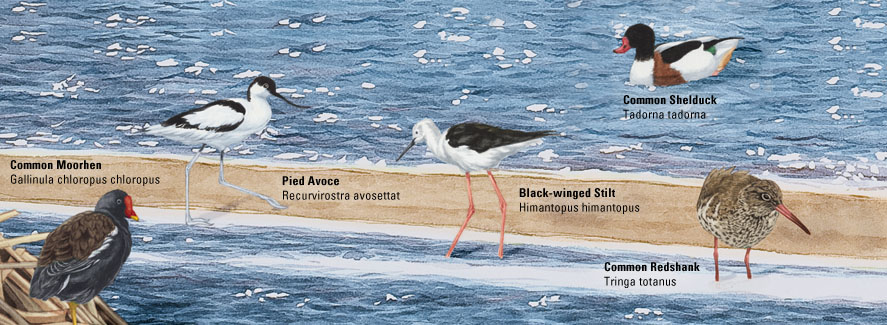
Al Wathba Wetland Reserve is located forty kilometres south-east of Abu Dhabi and covers an area of five square kilometres. It was formerly an area of sabkha amidst sand dunes, only flooding during scarce winter rainfall. Formally established as a protected area in 1998 by the late President, Sheikh Zayed bin Sultan Al Nahyan, it is managed by the EAD. The case for designating Al Wathba as a reserve became clearer when successive attempts of populations of Greater Flamingo (Phoenicopterus roseus) to breed there failed due to human disturbance. When a population bred successfully in 1999, this marked the first known successful breeding of Greater Flamingo in the Arabian Peninsula since 1922. Today nearly half of the bird species that occur in the UAE have been observed at Al Wathba. The wetland that sustains life at Al Wathba is a consequence of a creative recycling programme. Since rainfall at Al Wathba is insufficient to maintain it as a natural wetland, treated sewage effluent is diverted to the lake. This act of human engineering has turned an area of marginal economic and environmental value into a fine example of Abu Dhabi's ‘natural wealth' and the government's desire to find innovative ways to reuse water – perhaps its most precious natural resource.
The Kentish Plover
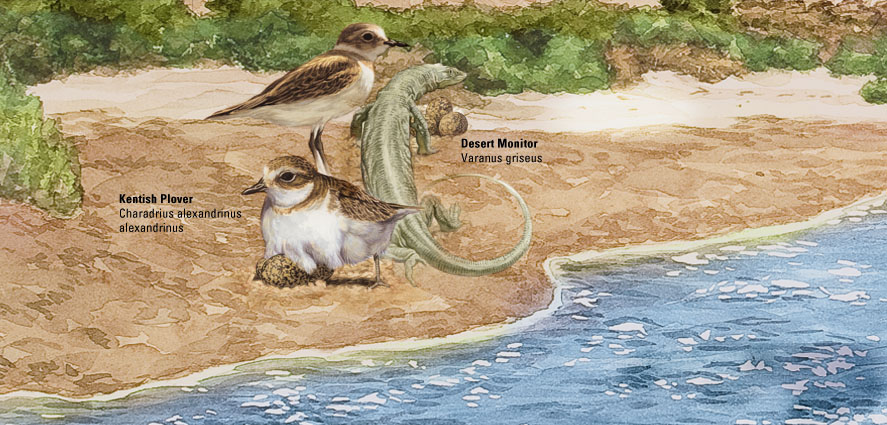
Less noticeable than the flamingo, the Kentish Plover (Charadrius alexandrinus alexandrinus) is a small resident bird that breeds in the hottest months of the year. The bird nests when the ground temperature exceeds a scorching 50°C! Attentive care by both parents, including shading the delicate eggs improves the chances of the chick embryo survival. With more than 200 breeding pairs, Al Wathba is one of the true strongholds of the species in the region.
Importance of the Wetland to Desert Biodiversity
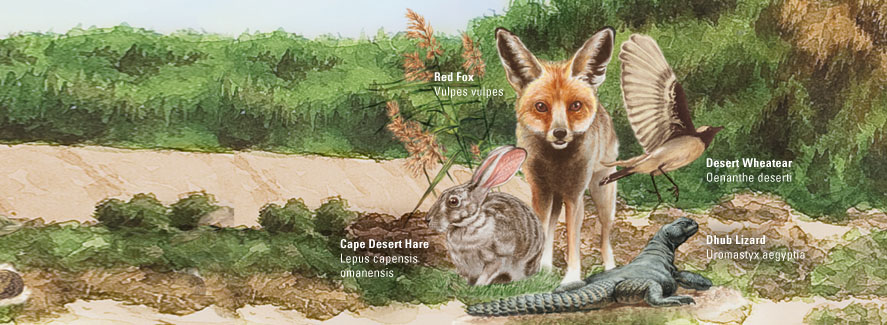
The existence of perennial surface water at Al Wathba supports a remarkable diversity of species both resident and migratory. The Greater Flamingo (Phoenicopterus roseus), Black-winged Stilt (Himantopus himantopus) and Pied Avocet (Recurvirostra avosetta) are of particular interest to birdwatchers and scientists. In addition to bird life, the area also supports many other fauna species including the Red Fox, Dhub and Monitor Lizards, Cape Desert Hare and numerous small rodents. The number and variety of plant and animal species thriving in such a relatively small area endows Al Wathba with an especially high conservation value.
Delicate and Balanced Chemistry – Rainfall, Alkalinity and Salinity
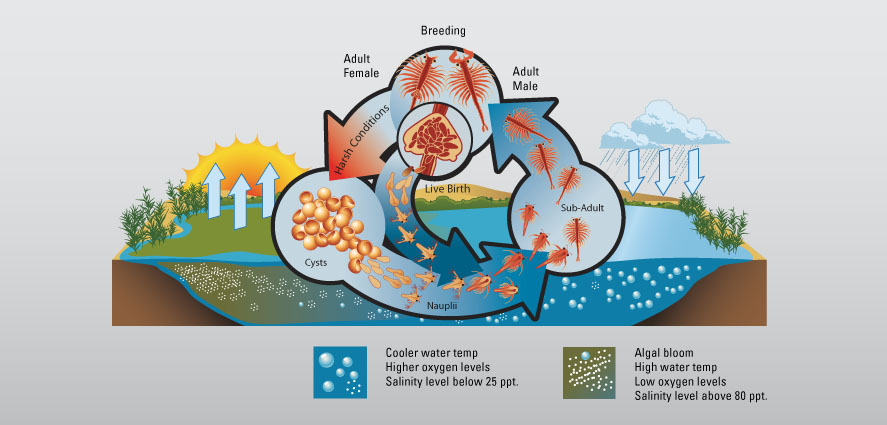
Artemia (Artemia franciscana), or brine shrimp, is a species of aquatic crustacean and a major food source for the impressive Greater Flamingo (Phoenicopterus roseus). It is a highly adaptive shrimp but tends to breed optimally in areas where the salinity is between 30–50 parts per thousand (ppt). Artemia have a complex life cycle and are essential to the sustainability of the wetland ecosystem. Without the nutritious shrimp, flamingos and other migratory birds stopping over at the wetland would be unable to obtain sufficient nourishment to continue their long and strenuous journeys. In addition to their vital role as a food source for birds, brine shrimp help clean the lake by filtering the water of contaminants such as phosphorus, nitrogen and other chemicals. By maintaining the delicate chemistry of the lake, artemia keep the ecosystem healthy.
The Importance of Salinity
Salinity is one of the most important physical factors affecting the artemia life cycle. Sudden and locally heavy rainfall occurs in the winter, resulting in significant amounts of fresh water entering the lake. This influx of fresh water lowers the lake's salinity and drops its temperature, making ideal conditions for breeding and hatching. As ambient temperatures increase during summer, evaporation causes the lake's salinity to increase. Normally, at salinity levels of less than 80 ppt, artemia reproduce by laying eggs that hatch immediately (ovoviviparous) to produce nauplius larvae. As the salinity increases above 80ppt, instead of hatching the larvae encyst by forming a harder outer shell around the egg itself. Cysts will only hatch when the salinity is less than 25ppt. While salinity and alkalinity greatly influence cyst hatching and artemia population growth, they have no effect on survival of the larvae within the cysts. Lake and wetland algae are the main food source for artemia. Algal growth in the lake increases significantly if un-hatched cysts remain dormant during extended periods of high water salinity. This situation, where the shrimp, as the main predator of algae, are reduced in numbers, drives algal blooms, creating a ‘red lake' similar to ‘red tides' in the ocean. Following the rapid bloom, the algae die and the subsequent decomposition depletes dissolved oxygen in the water, which in turn, impacts the shrimps' survival. This ‘red lake' effect can threaten many species within the delicate food chain of the wetland.
Dragonflies
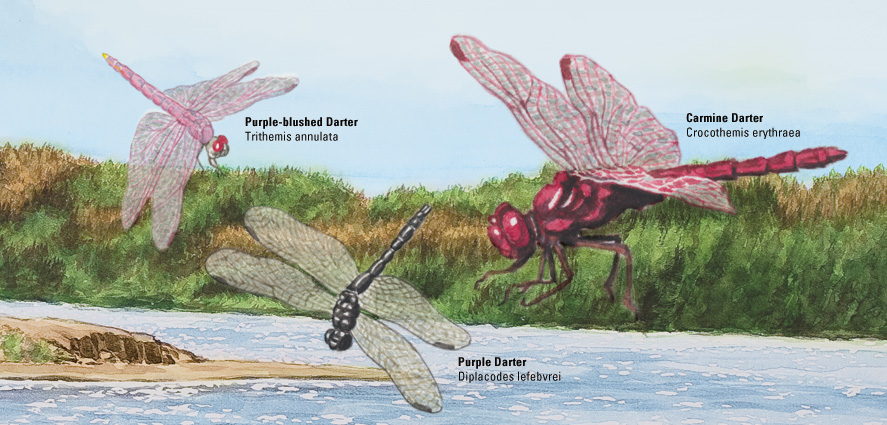
There are at least six species of strikingly colourful dragonflies and damselflies at Al Wathba, which is possibly the best site for dragonflies in Abu Dhabi. Dragonflies require fresh to very low saline water for breeding. The larvae are carnivorous and dependent upon other insect larvae (particularly mosquitoes) as food. Certainly, their ability to prey upon and reduce mosquito numbers help make the reserve more hospitable to humans – be they casual visitors or scientists!
The Greater Flamingo
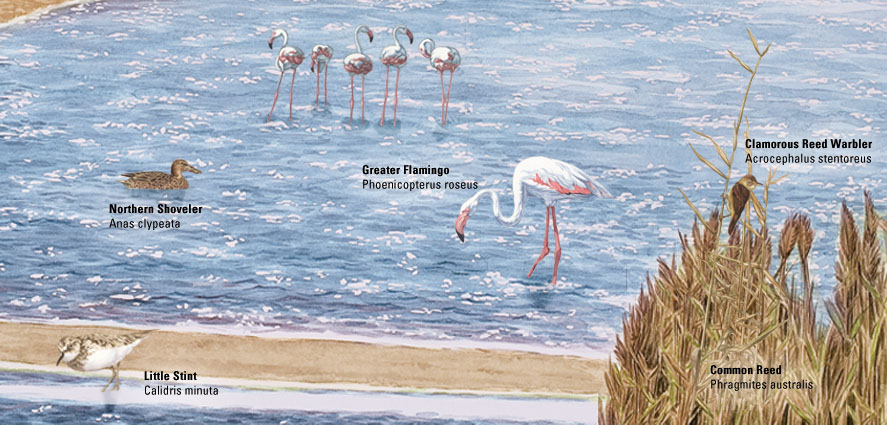
The Greater Flamingo (Phoenicopterus roseus) is one of the most conspicuous species in the wetlands. It is the largest species of flamingo, averaging 110–150 cm in height and weighing 2–4 kg. The Greater Flamingo is a filter feeder, living on algae and small shrimp. Only breeding when conditions are suitable, the Greater Flamingo female will lay a single chalky-white egg on a mud mound. Greater Flamingos are fully grown in two years, however they breed at 4–5 years and can live as long as 30 years.

















